Abstract
The growth and survival of several rifampin-resistant isolates of denitrifying bacteria were examined under anaerobic (denitrifying) and aerobic conditions. Two isolates added to nonsterile Bruno soil at densities of between 10(4) and 10(6) CFU g dry soil-1 exhibited an initial period of growth followed by a gradual decline in numbers. After 28 days, both isolates maintained viable populations of between 10(4) and 10(5) CFU g dry soil-1 under both denitrifying and aerobic conditions. One of the isolates consistently grew better under denitrifying conditions, and the other isolate consistently grew better under aerobic conditions. The relative pattern of denitrifying versus aerobic growth for each organism was not affected by the addition of glucose. The growth yields of the two isolates varied with soil type, but the relative pattern of denitrifying versus aerobic growth was consistent in three soils with greatly different properties. Five of nine isolates introduced into Bruno soil at low population densities (approximately 10(5) CFU g dry soil-1) exhibited better growth after 2 days under denitrifying conditions. It was not possible to predict the prevalence of the denitrifying or aerobic mode of growth in nonsterile soil from the growth characteristics of the isolates in pure cultures or sterile soil.
Full text
PDF
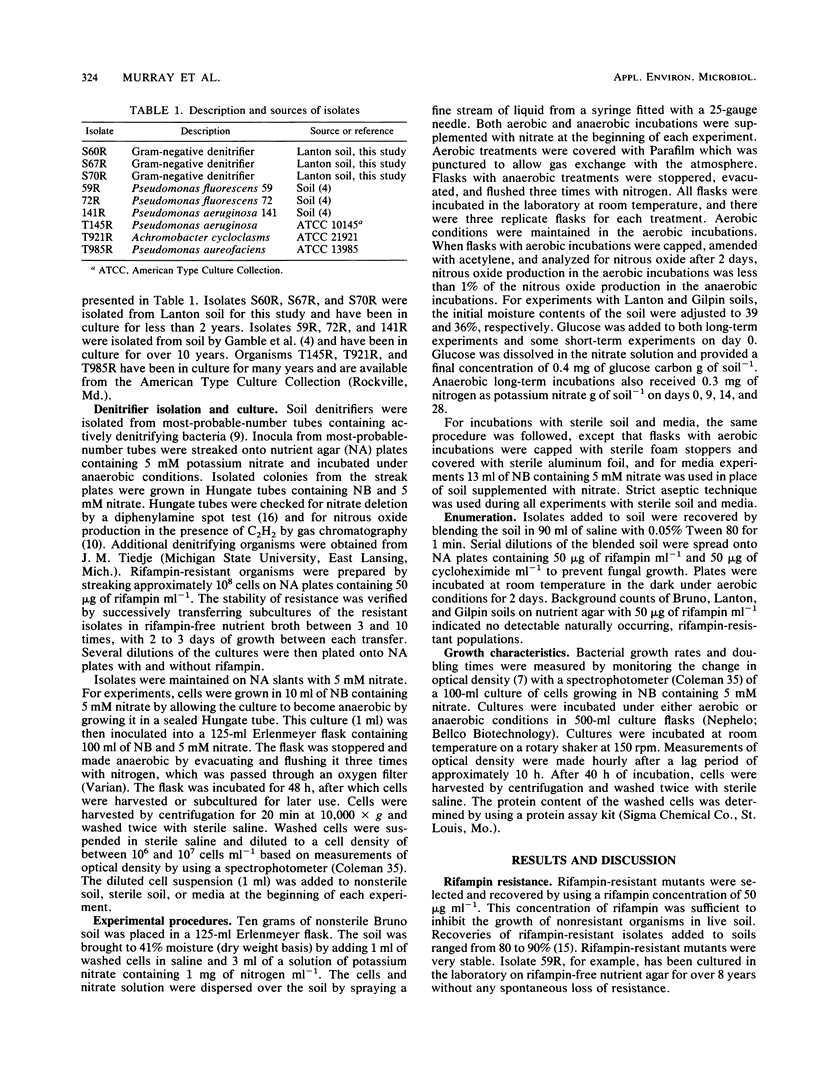
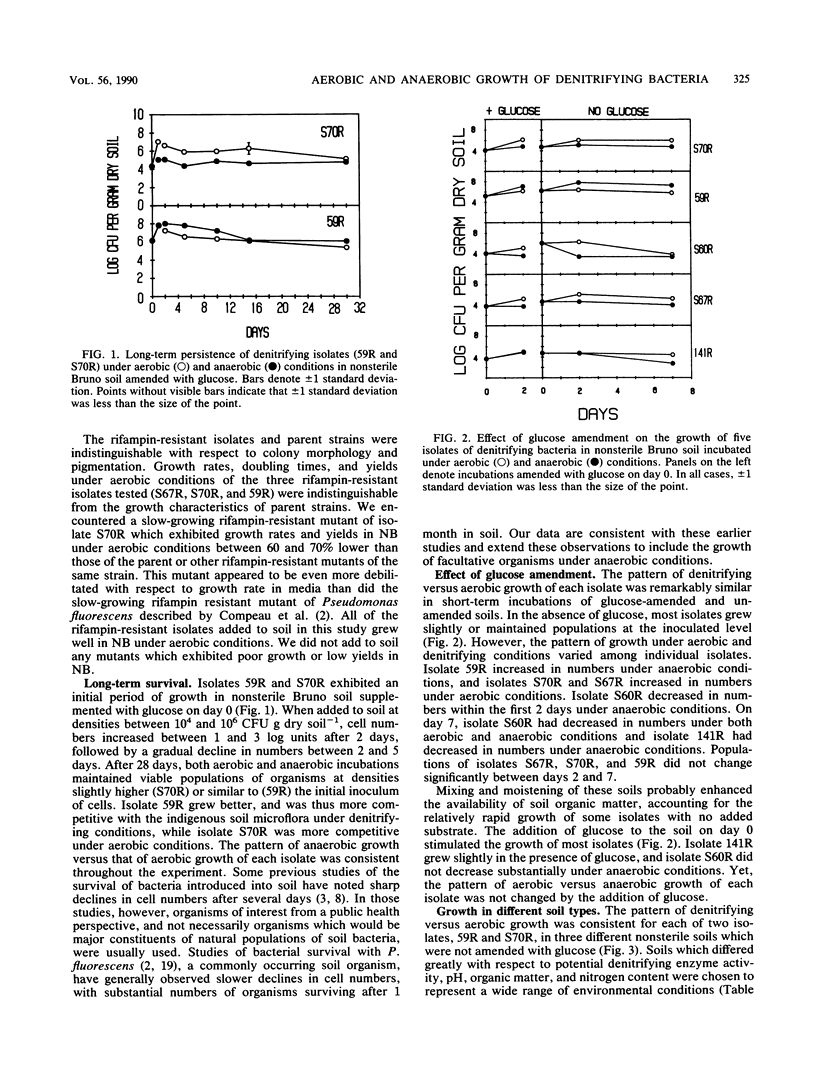
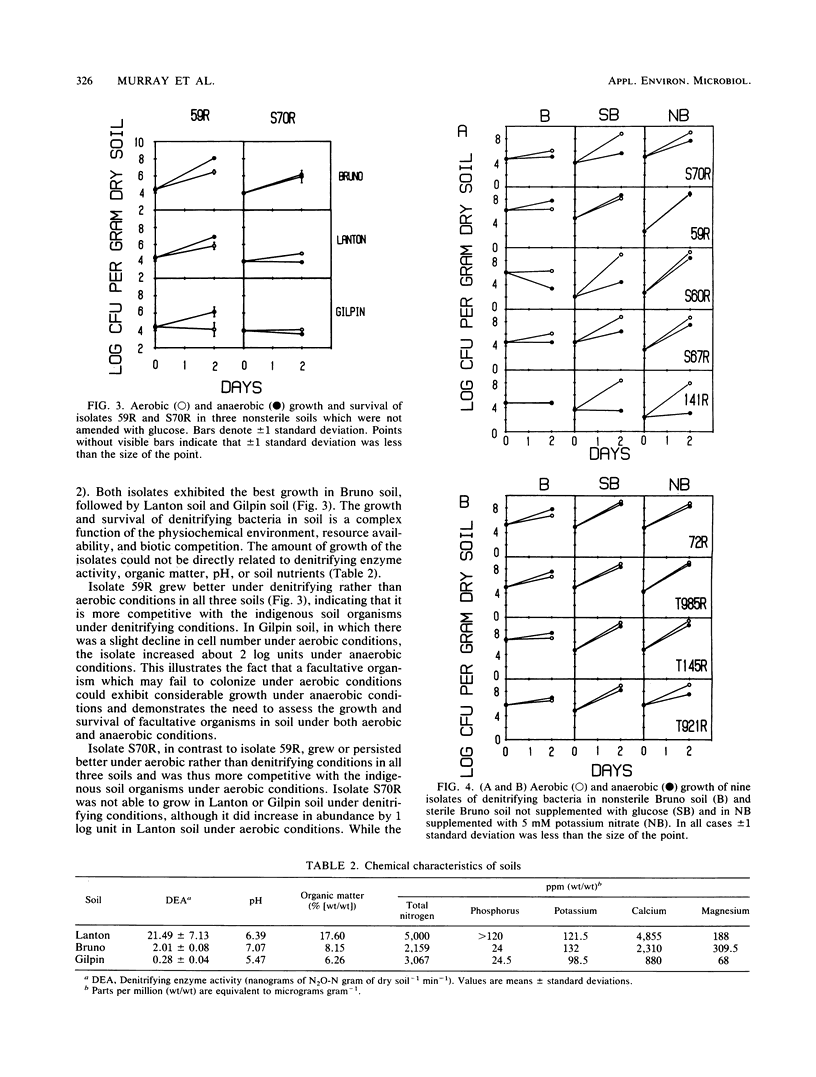
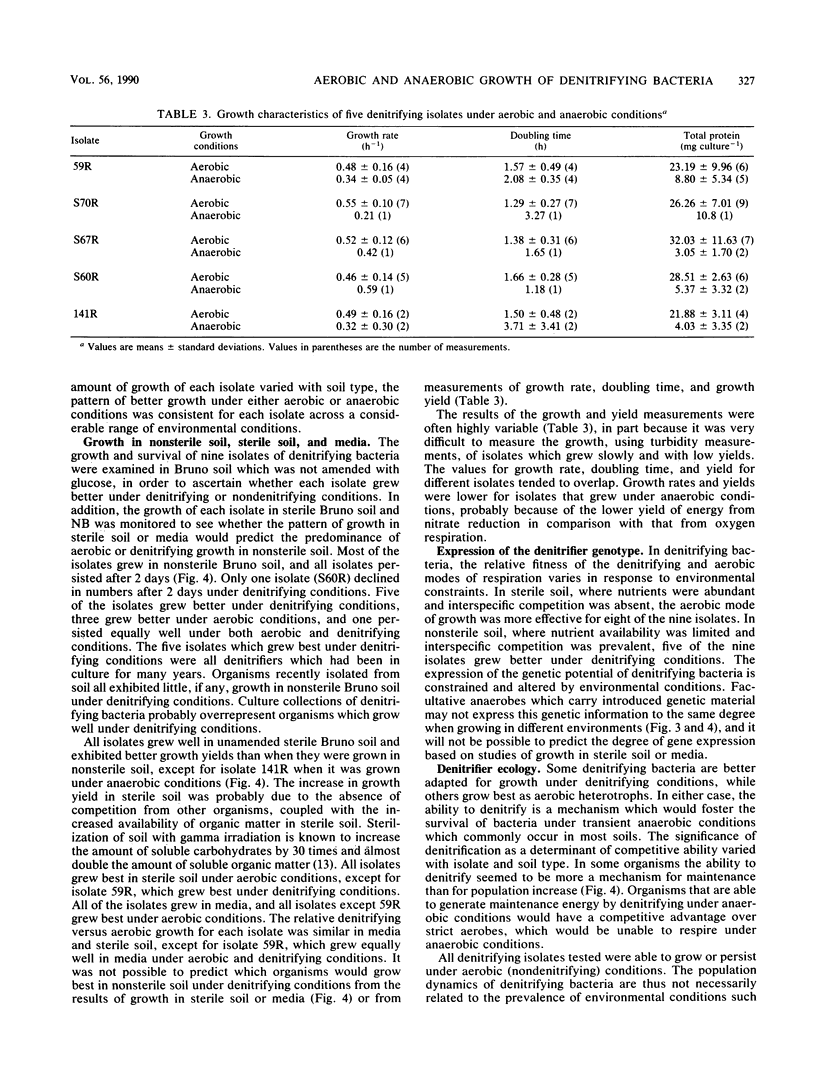
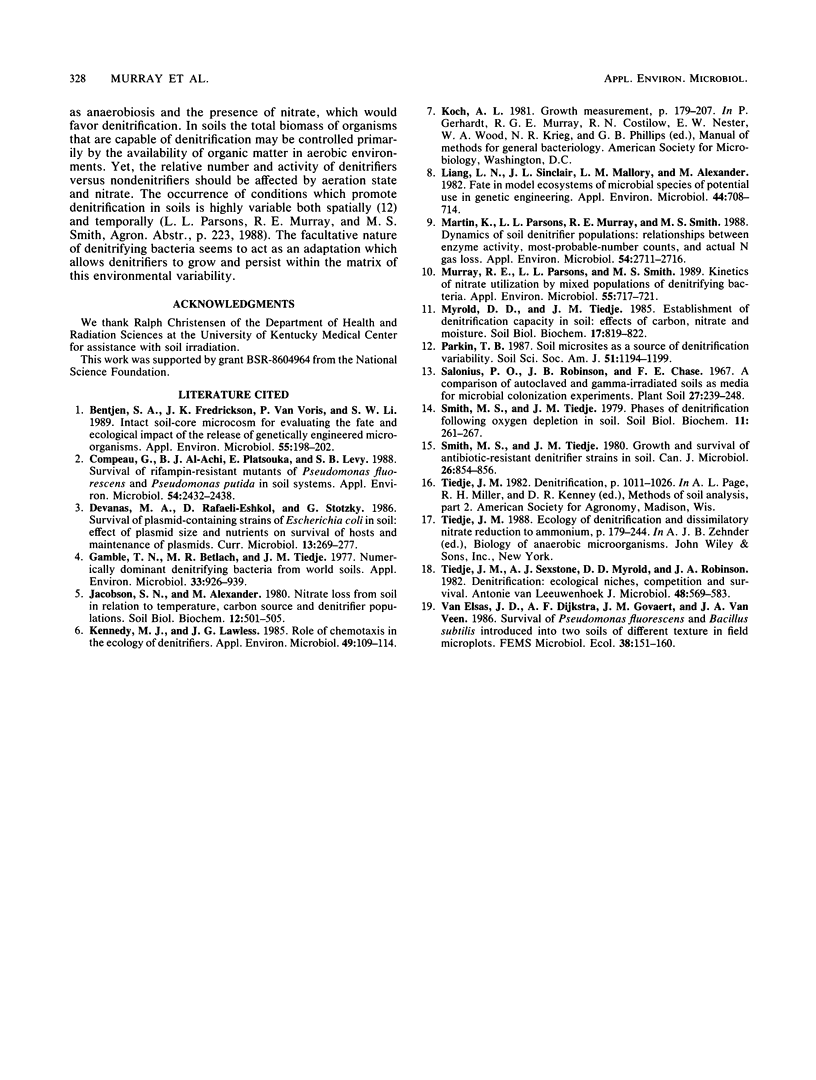
Selected References
These references are in PubMed. This may not be the complete list of references from this article.
- Bentjen S. A., Fredrickson J. K., Van Voris P., Li S. W. Intact soil-core microcosms for evaluating the fate and ecological impact of the release of genetically engineered microorganisms. Appl Environ Microbiol. 1989 Jan;55(1):198–202. doi: 10.1128/aem.55.1.198-202.1989. [DOI] [PMC free article] [PubMed] [Google Scholar]
- Compeau G., Al-Achi B. J., Platsouka E., Levy S. B. Survival of rifampin-resistant mutants of Pseudomonas fluorescens and Pseudomonas putida in soil systems. Appl Environ Microbiol. 1988 Oct;54(10):2432–2438. doi: 10.1128/aem.54.10.2432-2438.1988. [DOI] [PMC free article] [PubMed] [Google Scholar]
- Gamble T. N., Betlach M. R., Tiedje J. M. Numerically dominant denitrifying bacteria from world soils. Appl Environ Microbiol. 1977 Apr;33(4):926–939. doi: 10.1128/aem.33.4.926-939.1977. [DOI] [PMC free article] [PubMed] [Google Scholar]
- Kennedy M. J., Lawless J. G. Role of chemotaxis in the ecology of denitrifiers. Appl Environ Microbiol. 1985 Jan;49(1):109–114. doi: 10.1128/aem.49.1.109-114.1985. [DOI] [PMC free article] [PubMed] [Google Scholar]
- Liang L. N., Sinclair J. L., Mallory L. M., Alexander M. Fate in model ecosystems of microbial species of potential use in genetic engineering. Appl Environ Microbiol. 1982 Sep;44(3):708–714. doi: 10.1128/aem.44.3.708-714.1982. [DOI] [PMC free article] [PubMed] [Google Scholar]
- Martin K., Parsons L. L., Murray R. E., Smith M. S. Dynamics of Soil Denitrifier Populations: Relationships between Enzyme Activity, Most-Probable-Number Counts, and Actual N Gas Loss. Appl Environ Microbiol. 1988 Nov;54(11):2711–2716. doi: 10.1128/aem.54.11.2711-2716.1988. [DOI] [PMC free article] [PubMed] [Google Scholar]
- Murray R. E., Parsons L. L., Smith M. S. Kinetics of nitrate utilization by mixed populations of denitrifying bacteria. Appl Environ Microbiol. 1989 Mar;55(3):717–721. doi: 10.1128/aem.55.3.717-721.1989. [DOI] [PMC free article] [PubMed] [Google Scholar]
- Tiedje J. M., Sexstone A. J., Myrold D. D., Robinson J. A. Denitrification: ecological niches, competition and survival. Antonie Van Leeuwenhoek. 1982;48(6):569–583. doi: 10.1007/BF00399542. [DOI] [PubMed] [Google Scholar]


